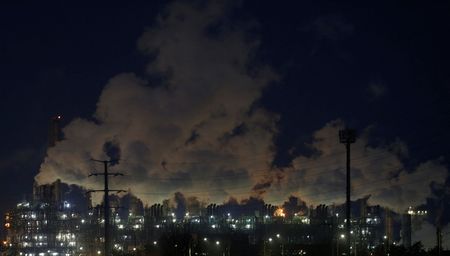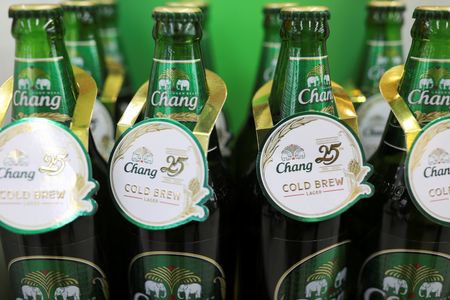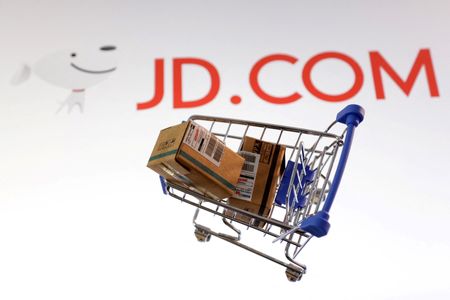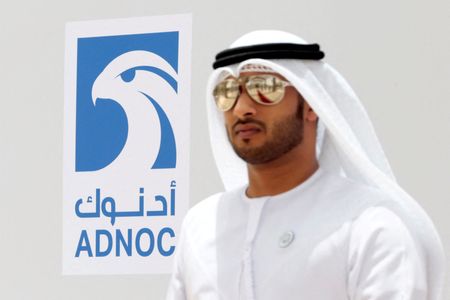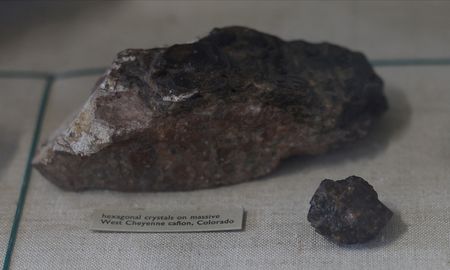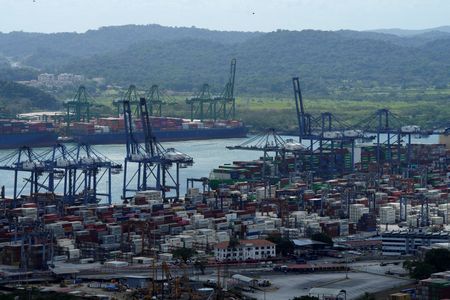By Mohi Narayan and Heekyong Yang
(Reuters) -South Korea will announce a plan this month to restructure its ailing petrochemical sector, Industry Minister Kim Jung-kwan said on Thursday.
Below are South Korea’s top petrochemical producers based on the Korea Chemical Industry Association (KCIA).
OVERVIEW
South Korean producers have suffered losses due to oversupply, particularly in China, the biggest petrochemical market, and sluggish demand.
The country can produce about 13 million metric tons and about 11 million metric tons per year (tpy) of ethylene and propylene respectively, making it the world’s fourth-biggest petrochemical producer, according to the KCIA.
It was also the biggest importer of petrochemical feedstock naphtha in 2024 at 652,000 barrels per day, data from analytics firm Kpler showed.
MAJOR PRODUCERS AND PRODUCTION
LG CHEM
Yeosu-based LG Chem is the top producer of ethylene and propylene, which are key plastic feedstocks used in industries from automobile to construction, with designed capacities at 3.380 million tpy and 1.980 million tpy, respectively.
Its petrochemicals division recorded an operating loss of 90.4 billion won ($65.29 million) in second quarter.
LOTTE CHEM
The second-largest producer, Lotte Chemical, has an annual capacity of 2.330 million tpy of ethylene and 1.191 million tpy of propylene. The company has subsidiaries in Malaysia and a project in Indonesia.
It sold a 25% stake in its Indonesian subsidiary, PT Lotte Chemical Indonesia (LCI), reducing ownership from 49% to 24%, and sold Lotte Chemical Pakistan earlier this year to strengthen its financial position and reduce debt.
Lotte Chem reported an operating loss of 224.90 billion won in the second quarter.
YNCC
Yeochun NCC, a joint venture between DL Chemical and Hanwha Solutions, is the third-largest producer with a capacity of 2.285 million tpy of ethylene and 1.289 million tpy of propylene.
DL Chemical will issue a loan of 150 billion won to YNCC to help pay debts due in August.
YNCC reported an operating loss of 150 billion won in 2024, versus 239 billion won loss a year earlier.
HANWHA TOTALENERGIES
Hanwha has a joint venture with TotalEnergies called Hanwha TotalEnergies which can produce 1.525 million tpy of ethylene and 1.064 million tpy of propylene.
It swung to an operating loss of 118 billion won in the first quarter, versus a profit of 51 billion won in the previous-year-period.
HD HYUNDAI CHEMICAL
HD Hyundai Chemical can produce 850,000 tpy of ethylene and 451,000 tpy of propylene. It is either looking to acquire Lotte Chemical’s cracker, or the two companies may merge their cracker operations at the Daesan complex, trade sources have said. HD Hyundai said no decision had been reached.
It reported an operating loss of 170 billion won for the second quarter, versus a profit of 560 million won a year earlier.
KPIC
Korea Petrochemical Ind. Co., Ltd (KPIC) can produce 900,000 tpy of ethylene and 560,000 tpy of propylene at Ulsan.
KPIC swung to an operating loss of 4.5 billion won in the second quarter, after reporting a profit of 53 million won a year earlier.
GS CALTEX
South Korea’s No. 2 refiner GS Caltex can produce 900,000 tpy of ethylene and 970,000 tpy of propylene at its Yeosu complex. Its petrochemical business recorded an operating loss of 53 billion won in the first quarter, widening from a loss of 1 billion won in the prior-year period.
SK GEOCENTRIC
SK Geo Centric, a subsidiary of SK Innovation which owns the country’s top refiner SK Energy, can produce 660,000 tpy of ethylene and 380,000 tpy of propylene. SK Group has halted SK Geocentric’s plan to build a plastic recycling complex in Ulsan, according to local media reports.
S-OIL
South Korea’s third-largest refiner S-Oil can produce 182,000 tpy of ethylene and 840,000 tpy of propylene at Ulsan. Adding to oversupply worries, S-Oil is developing a 1.8 million tpy ethylene plant with its majority owner Saudi Aramco.
The Shaheen project, Aramco’s largest investment in South Korea, is on track for completion in 2026, Aramco said in its second-quarter earnings announcement.
S-Oil reported an operating loss of 344 billion won for the second quarter, versus 161 billion won in profit a year earlier.
($1 = 1,384.5000 won)
(Reporting by Mohi Narayan in New Delhi and Heekyong Yang in Seoul; Editing by Florence Tan and Rachna Uppal)

